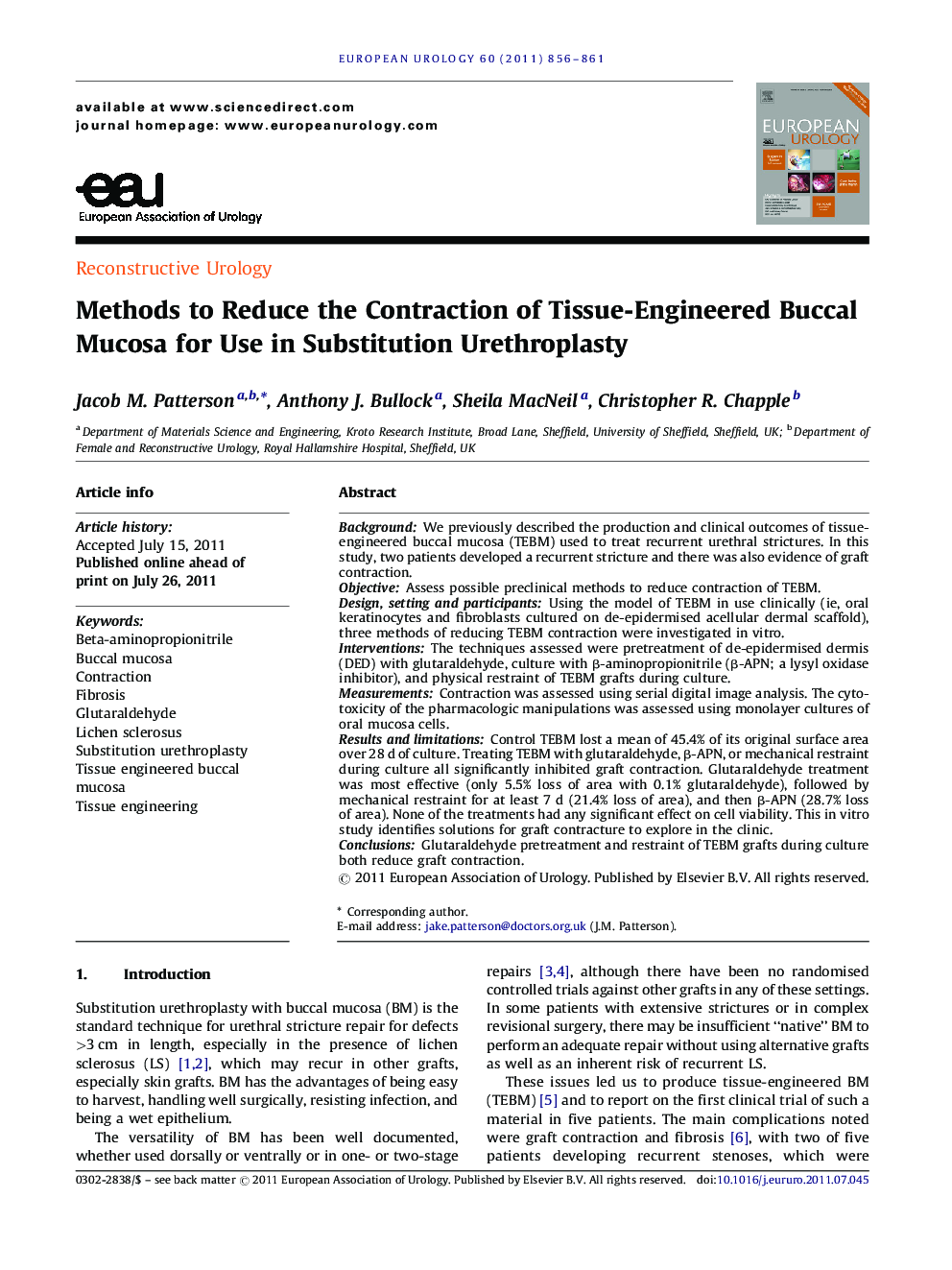| Article ID | Journal | Published Year | Pages | File Type |
|---|---|---|---|---|
| 3924279 | European Urology | 2011 | 6 Pages |
BackgroundWe previously described the production and clinical outcomes of tissue-engineered buccal mucosa (TEBM) used to treat recurrent urethral strictures. In this study, two patients developed a recurrent stricture and there was also evidence of graft contraction.ObjectiveAssess possible preclinical methods to reduce contraction of TEBM.Design, setting and participantsUsing the model of TEBM in use clinically (ie, oral keratinocytes and fibroblasts cultured on de-epidermised acellular dermal scaffold), three methods of reducing TEBM contraction were investigated in vitro.InterventionsThe techniques assessed were pretreatment of de-epidermised dermis (DED) with glutaraldehyde, culture with β-aminopropionitrile (β-APN; a lysyl oxidase inhibitor), and physical restraint of TEBM grafts during culture.MeasurementsContraction was assessed using serial digital image analysis. The cytotoxicity of the pharmacologic manipulations was assessed using monolayer cultures of oral mucosa cells.Results and limitationsControl TEBM lost a mean of 45.4% of its original surface area over 28 d of culture. Treating TEBM with glutaraldehyde, β-APN, or mechanical restraint during culture all significantly inhibited graft contraction. Glutaraldehyde treatment was most effective (only 5.5% loss of area with 0.1% glutaraldehyde), followed by mechanical restraint for at least 7 d (21.4% loss of area), and then β-APN (28.7% loss of area). None of the treatments had any significant effect on cell viability. This in vitro study identifies solutions for graft contracture to explore in the clinic.ConclusionsGlutaraldehyde pretreatment and restraint of TEBM grafts during culture both reduce graft contraction.
